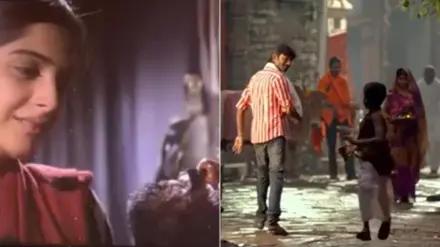 Image Source: Financial Express
Image Source: Financial Express
The cult romantic drama Raanjhanaa, originally released in 2013, has recently resurfaced in theaters with an AI-generated alternate ending for its Tamil-dubbed version, Ambikapathy. This surprising re-imagining where the beloved lead character Kundan (played by Dhanush) survives—a stark contrast to the original tragic finale—has caught widespread attention online, dividing audiences and sparking intense discussions among fans, critics, and even the film’s creative team.
Key Highlights of the Viral Alternate Ending
In the AI-altered climax, Kundan, who originally succumbed to a gunshot wound and died in the hospital, is shown regaining consciousness and sitting up in bed, alive and well. This twist brings overwhelming joy and tears to characters Bindiya and Murari, suggesting a happy resolution for the lovers.
The original film’s emotional ending, with Kundan’s death underscored by Zoya’s poignant monologue, had earned critical acclaim and deep fan admiration for its raw and powerful storytelling.
Footage of this new AI-generated ending quickly spread on social media platforms like Twitter (X), Instagram reels, and YouTube, drawing millions of views and diverse reactions from nostalgic fans and new audiences alike.
Audience Reactions: Mixed Feelings and Strong Opinions
Many fans welcomed the alternate ending with cheers and emotional appreciation, describing it as a comforting “what-if” that allowed viewers to imagine Kundan and Zoya living happily ever after.
Others expressed disappointment, feeling the new ending undermined the original’s artistic integrity and thematic depth. Some deemed it the “worst ending ever,” arguing that the tragic finale was fundamental to the film’s emotional impact and message.
A significant faction stressed that certain films, like Raanjhanaa, derive their uniqueness from their unresolved pain and bittersweet realities, and tampering with these elements risks diluting the cinematic experience.
The online discourse reflected a broader debate about the use of AI technology in creative industries—balancing innovation and respect for original artistic vision.
The Director’s Response and Industry Backlash
Aanand L Rai, the original director of Raanjhanaa, publicly condemned the AI-altered ending in a heartfelt Instagram post describing the developments as deeply upsetting and a violation of his creative rights.
Rai lamented that the film, born from collaborative artistic efforts and personal expression, was altered, repackaged, and re-released without his knowledge or consent.
Film circles and industry commentators expressed concern over the ethical implications of using AI to modify finished creative works, especially without approval from the creators or actors.
The controversy has ignited conversations about copyright, consent, and artistic sanctity in the age of AI-driven content manipulation.
Context and Significance of the Original Film
Raanjhanaa (2013) is celebrated for its poignant portrayal of unrequited love, societal complexities, and youthful passion, set against the vibrant backdrop of Varanasi.
Its original climax—marked by Kundan’s death and Zoya’s tearful monologue—serves as the emotional and thematic anchor, leaving a lasting impact on audiences and critics.
The Tamil-dubbed version, Ambikapathy, released shortly after, is currently the version featuring this newly introduced happy ending.
Broader Implications: AI in Film and Audience Expectations
The Raanjhanaa case exemplifies how artificial intelligence is beginning to reshape film consumption and content distribution, enabling alternate storylines and endings never envisioned by original creators.
While AI offers exciting possibilities for artists and marketers to reimagine narratives, it also raises concerns about preserving original intent, respecting intellectual property, and managing audience expectations.
The viral response indicates that while some viewers appreciate having additional options or “comfort endings,” many others value the authenticity and emotional truth that the original artistic choices convey.
This incident could set a precedent for how classic films and beloved stories are treated in the future, emphasizing the need for clear ethical guidelines and industry standards.
What Lies Ahead for Raanjhanaa and Its Fans
The heated debate and widespread attention may encourage producers and distributors to reconsider approaches to re-releases, especially when deploying AI modifications.
Fans continue to celebrate and debate both versions, with some hoping for official statements or clarifications regarding the film’s availability in alternate forms.
Meanwhile, a standalone sequel titled Tere Ishk Mein is slated for release later this year, potentially offering a fresh chapter to the narrative without altering the original’s legacy.
In essence, the AI-generated alternate ending of Raanjhanaa has revived enthusiastic fan engagement and sparked a reflective conversation about the intersection of technology, creativity, and cultural heritage in cinema. Whether one views the new ending as a joyous alternate reality or a disruption of a classic, the dialogue it has unleashed is a compelling moment in the evolving story of film in the digital age.
Sources: Hindustan Times, Financial Express
Advertisement
Advertisement



